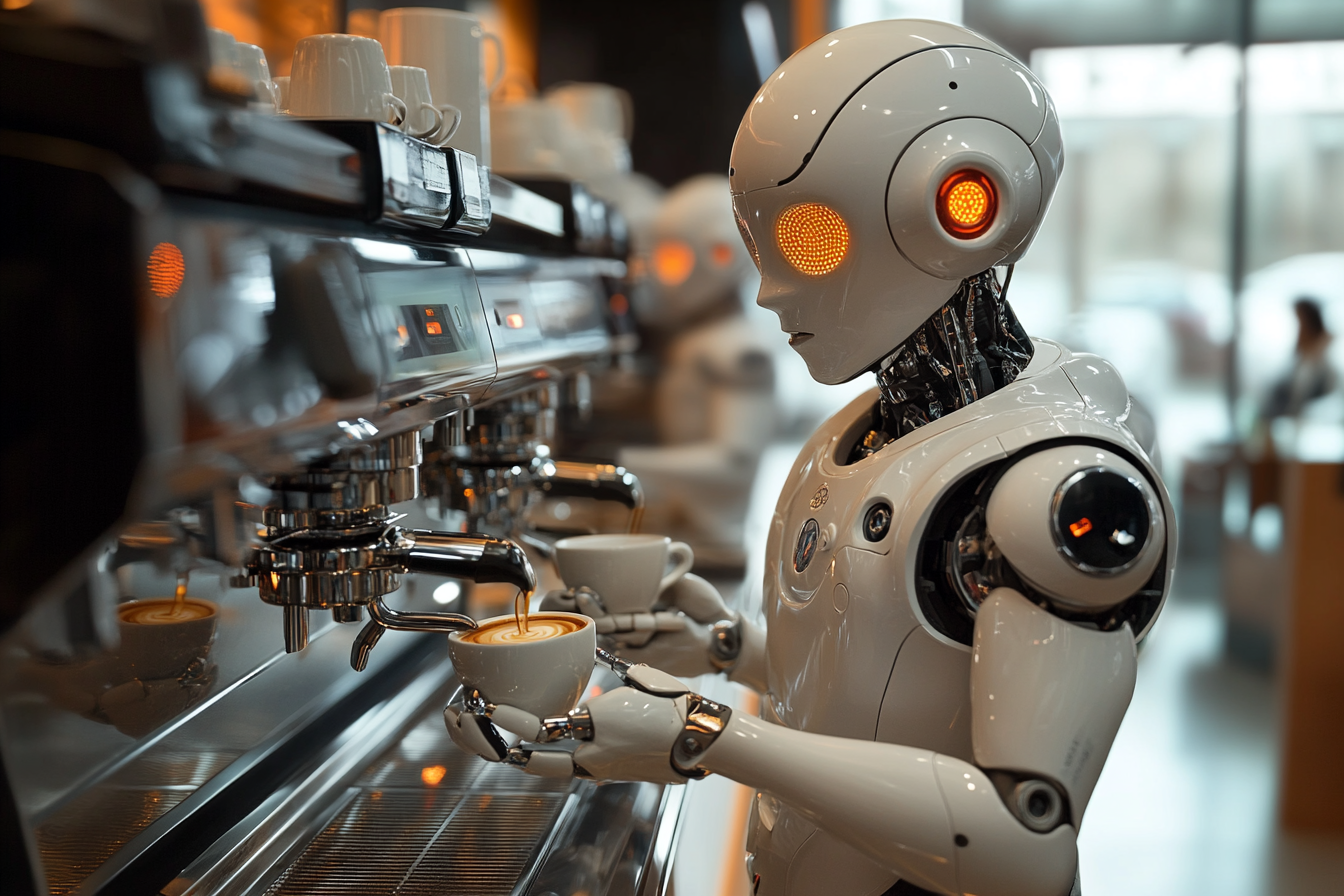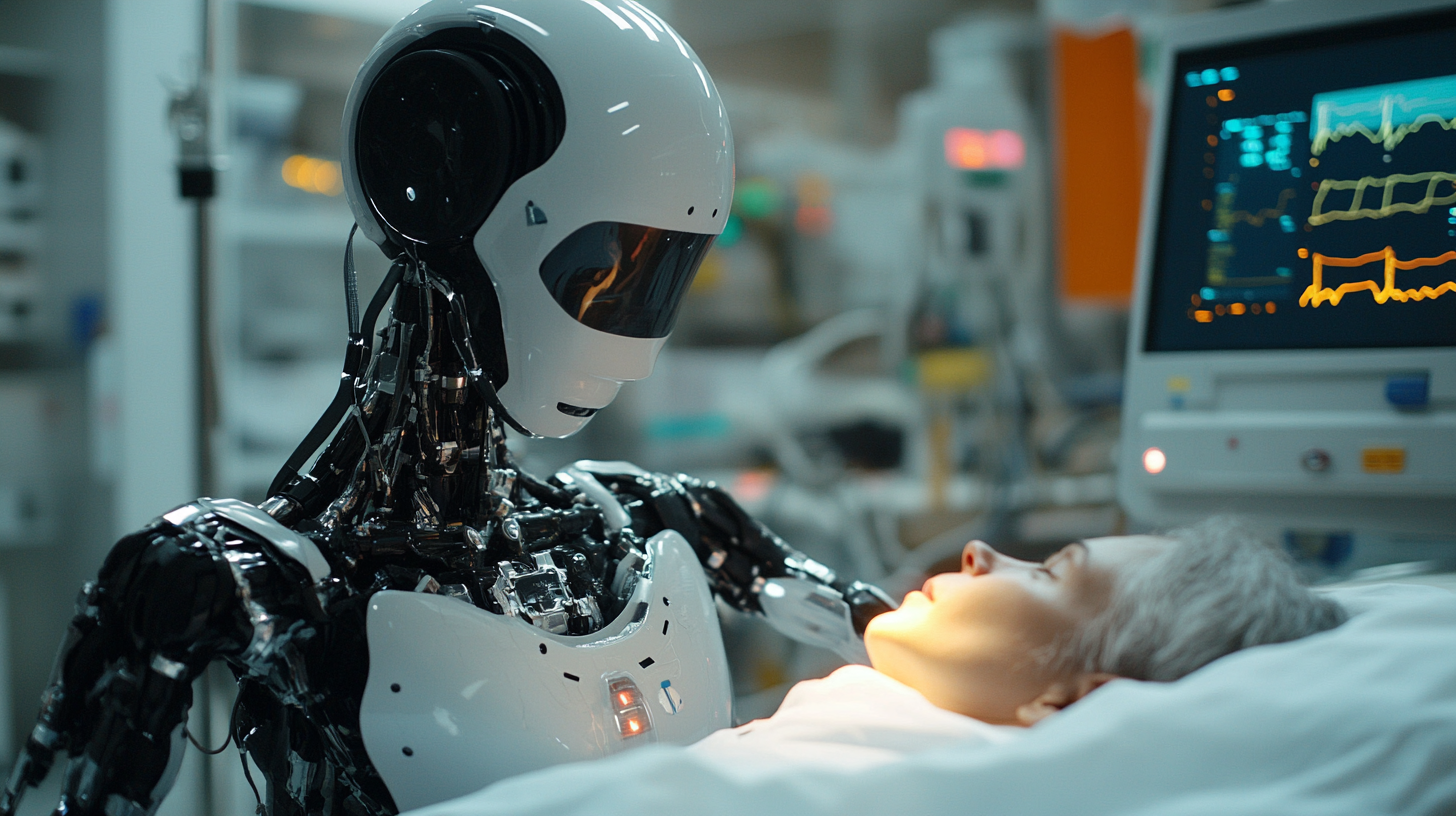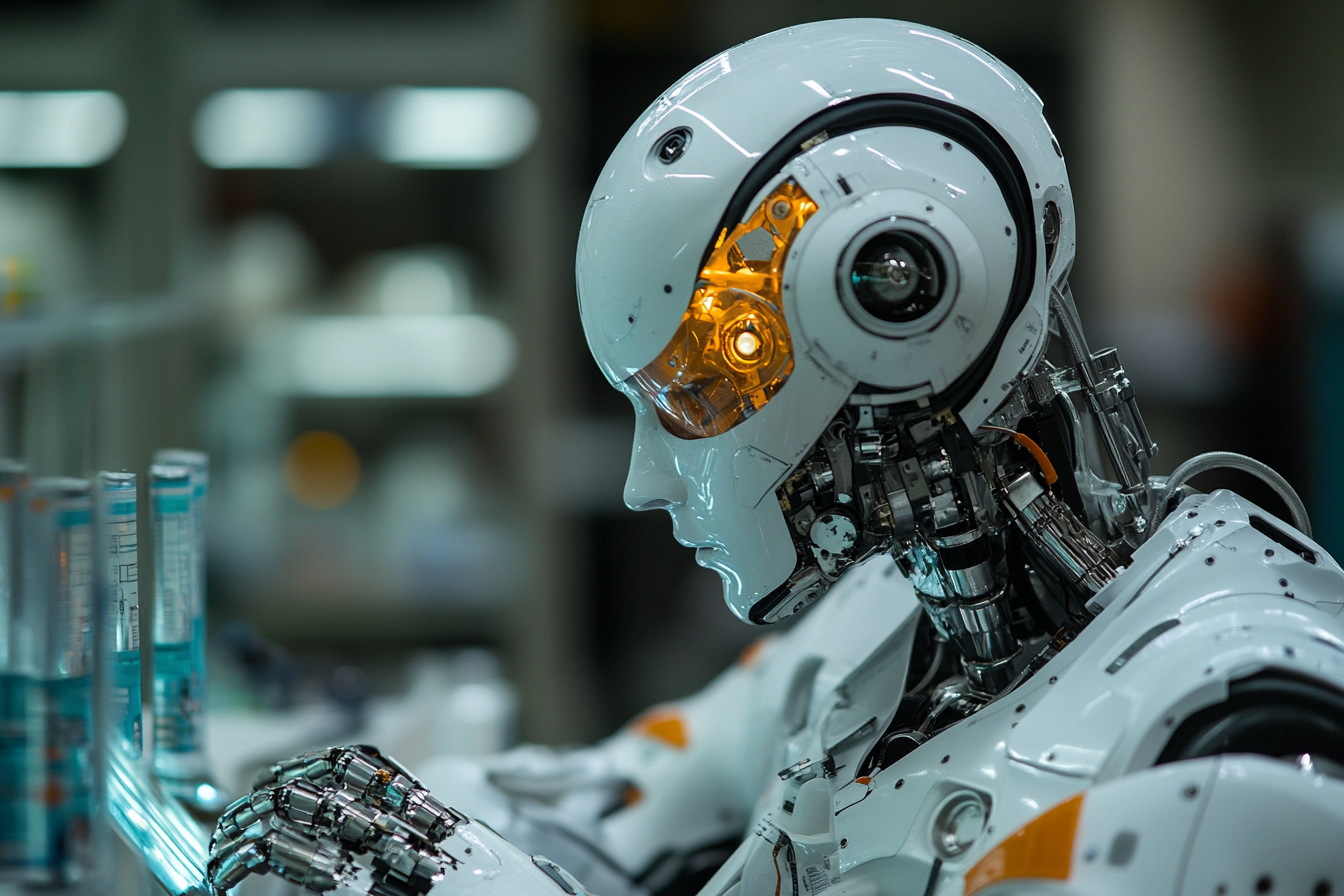OpenAI: The Story of Chat GPT
It seems like AI just exploded into our lives out of nowhere! Remember that November day in 2022 when ChatGPT, a chatbot that could hold conversations, write poems, and even generate code, suddenly appeared? It felt like the future had arrived, and many of us were caught off guard.
But the truth is, OpenAI’s journey has been years in the making, with a fascinating story of ambition, innovation, and a mission to ensure artificial general intelligence (AGI) benefits all of humanity.
Listen to Podcast
The Founding of OpenAI: A Dream Team with a Bold Vision
OpenAI was born in December 2015, the brainchild of a group of tech visionaries, including Sam Altman, Elon Musk, Ilya Sutskever, and Greg Brockman. They saw the immense potential of AGI, AI systems smarter than humans, to reshape the world. But they also recognized the potential dangers. What if AGI fell into the wrong hands or was used for malicious purposes?
To prevent this, they envisioned OpenAI as a research lab dedicated to developing friendly AI, AI that would serve humanity and be accessible to everyone. They wanted to ensure that no single entity could control this powerful technology. This commitment to collaboration and open research has been a cornerstone of OpenAI’s approach from the beginning.
Initially, a group of investors, including Elon Musk, pledged a total of $1 billion to support OpenAI’s mission. However, the actual amount collected by 2019 was $130 million. Despite this, OpenAI was determined to attract the best minds in AI, even offering corporate-level salaries, which was unusual for a non-profit organization. They recognized that building AGI would require top talent and a collaborative environment.
Interestingly, OpenAI’s journey began in a rather humble setting – Greg Brockman’s living room! It was from this unconventional starting point that they set out to tackle one of the most ambitious goals in technology: creating safe and beneficial AGI. Elon Musk, one of the initial co-founders, later stepped down from the board in 2018 to avoid potential conflicts of interest with his other ventures, such as Tesla and SpaceX.
Sam Altman: The CEO Shaping the Future of AI
At the helm of OpenAI is Sam Altman, a charismatic leader with a passion for technology and a knack for bringing people together. He’s been described as a visionary, a pragmatist, and someone who deeply cares about the impact of AI on society.
Altman has a complex view of AI, acknowledging both its potential and its risks.
He once said, “AI will probably most likely lead to the end of the world, but in the meantime, there’ll be great companies.” This quote reflects his belief in AI’s ability to revolutionize industries and improve lives while also recognizing the need for careful development and responsible use.
From Humble Beginnings to a Tech Powerhouse
In its early years, OpenAI focused on developing tools and platforms for reinforcement learning, a type of machine learning where AI agents learn by interacting with their environment. One of their early successes was the OpenAI Gym, a toolkit that allowed researchers to develop and compare different AI algorithms.
They also created Universe, a platform that trained AI agents to interact with various applications, websites, and games. One notable project was OpenAI Five, a team of AI agents that learned to play the complex video game Dota 2 at a competitive level. This demonstrated the potential of reinforcement learning to tackle challenging problems in a virtual environment.
The Rise of the Language Models: GPT and the AI Revolution
OpenAI’s journey took a significant turn with the development of their language models. In 2018, they released GPT (Generative Pre-trained Transformer), a language model that could generate human-like text. This was a major breakthrough, but it was just the beginning.
They continued to refine and improve their models, leading to the release of GPT-2 in 2019. Then, in 2020, they unveiled GPT-3, a game-changer with 175 billion parameters. It was the largest language model ever created, capable of writing stories, translating languages, and even generating code. It was also surprisingly good at holding conversations, which paved the way for the creation of ChatGPT.
In 2021, OpenAI further expanded its capabilities with the release of DALL-E and Codex. DALL-E was a ground-breaking AI system that could create images from text descriptions, while Codex could generate code from natural language prompts. These achievements showcased OpenAI’s progress in different AI domains and hinted at the transformative potential of their technology.
A key turning point in OpenAI’s trajectory was Microsoft’s $1 billion investment in 2019. This partnership provided OpenAI with the resources and support needed to accelerate their research and development efforts, ultimately leading to the creation of even more powerful AI models.
November 2022: ChatGPT Takes the World by Storm
It was in November 2022 that OpenAI truly captured the world’s attention with the release of ChatGPT. This chatbot, built on top of GPT-3.5, was unlike anything people had seen before. It could engage in natural-sounding conversations, answer questions, write different kinds of creative content, and even challenge incorrect premises.
ChatGPT quickly went viral, with people using it for everything from writing poems and emails to generating code and translating languages. It seemed like everyone was talking about AI, and OpenAI was at the center of it all. The release of ChatGPT has been widely credited with catalyzing widespread interest in generative AI, marking a significant milestone in the evolution of AI technology.
OpenAI’s Research Methodology
OpenAI’s success can be attributed, in part, to its unique approach to research. They have focused on three key areas:
- Reinforcement Learning: As seen with OpenAI Five, they have developed AI agents that learn by interacting with their environment, enabling them to master complex tasks and strategies.
- Unsupervised Learning: OpenAI has made significant strides in unsupervised learning, where AI models learn from unlabeled data, allowing them to discover patterns and insights without explicit instructions.
- Language Models: The development of the GPT series of language models has been a major focus, leading to breakthroughs in natural language processing and the creation of powerful tools like ChatGPT.
This multi-faceted approach has allowed OpenAI to explore different aspects of AI and develop a diverse range of capabilities.
The Impact of OpenAI: Transforming Industries and Our Lives
OpenAI’s technology has had a profound impact on various industries and aspects of life. In customer service, AI-powered chatbots are providing instant support and resolving issues efficiently, leading to improved customer satisfaction and reduced wait times.
In healthcare, AI models are assisting doctors in diagnosing diseases and developing new treatments, potentially revolutionizing patient care and medical research. In education, AI tutors are providing personalized learning experiences, adapting to individual student needs and enhancing educational outcomes.
OpenAI’s technology is also changing the way we interact with information. AI models can rapidly translate and summarize content, breaking down language barriers and making information more accessible to diverse audiences worldwide. This has significant implications for education, research, and cross-cultural communication.
Beyond specific industries, OpenAI’s technology is transforming the way we work and live. AI is automating routine tasks, providing decision support, and enabling more efficient data processing, leading to increased productivity and new possibilities in various fields.
OpenAI’s work has also significantly influenced the broader AI landscape, sparking a renewed interest in generative AI and its potential applications. This has led to increased investment in AI research and development, accelerating the pace of innovation in the field.
Challenges of Developing Safe and Ethical AI
OpenAI has faced numerous challenges in its pursuit of safe and ethical AI. One of the key challenges is ensuring that AI systems are aligned with human values and goals. This involves developing techniques to prevent AI from pursuing unintended or harmful objectives.
Another challenge is addressing the potential for bias in AI systems. AI models are trained on vast amounts of data, and if this data reflects existing societal biases, the AI models may perpetuate or even amplify these biases. OpenAI is actively working on methods to mitigate bias and promote fairness in AI systems.
Controversies Surrounding OpenAI
OpenAI’s journey has also been marked by controversies. The company’s shift from a non-profit to a for-profit model in 2019 raised concerns about its commitment to its original mission. Some worried that the pursuit of profit might compromise AI safety and ethics.
This shift was driven by the need to secure significant funding to support the development of advanced AI. However, it sparked a debate about the balance between rapid AI advancements and responsible oversight. Some critics argued that prioritizing profit could lead to cutting corners on safety or neglecting ethical considerations.
Another controversy surrounding OpenAI is the potential misuse of its technology. There are concerns about the possibility of generating fake news, creating deep fakes, or developing AI systems that could be used for malicious purposes. OpenAI has acknowledged these risks and is actively working on developing safeguards and promoting responsible AI use.
The Future of OpenAI: Building the AGI Economy
OpenAI is constantly evolving and pushing the boundaries of AI research. They are working on new models, exploring new applications, and engaging with policymakers to ensure AI benefits all of humanity.
Their vision for the future includes building the AGI economy, where AI systems contribute to economic growth and improve people’s lives. They believe that AI has the potential to solve some of the world’s most pressing problems, from climate change to poverty.
To achieve this vision, OpenAI has proposed several policy initiatives, including the creation of specialized economic zones where states can fast-track permits for AI facilities in exchange for offering computing power to public universities. They are also advocating for expanding energy capacity to support the growing demands of AI development, particularly in the Midwest and Southwest.
OpenAI recognizes that the future of AI requires a collaborative approach, involving governments, researchers, and industry leaders. They are actively engaging in discussions about AI regulation and governance, aiming to create a framework that fosters innovation while ensuring AI is developed and used responsibly.
Conclusion: Embracing the AI Revolution
OpenAI’s story is a testament to the power of human ingenuity and the transformative potential of AI. From humble beginnings in a living room to a tech powerhouse at the forefront of AI innovation, OpenAI has consistently pushed the boundaries of what’s possible.
While there are challenges and uncertainties ahead, OpenAI is committed to building a future where AI is a force for good, empowering individuals and benefiting society as a whole. They are actively working to address concerns about AI safety, ethics, and responsible use, ensuring that AI remains a tool that serves humanity.
As we move forward, it’s crucial to stay informed about the latest developments in AI and engage in discussions about its implications. OpenAI’s journey is a reminder that the future of AI is not predetermined. It’s a future that we can shape together, ensuring that AI is used to create a better world for everyone.






